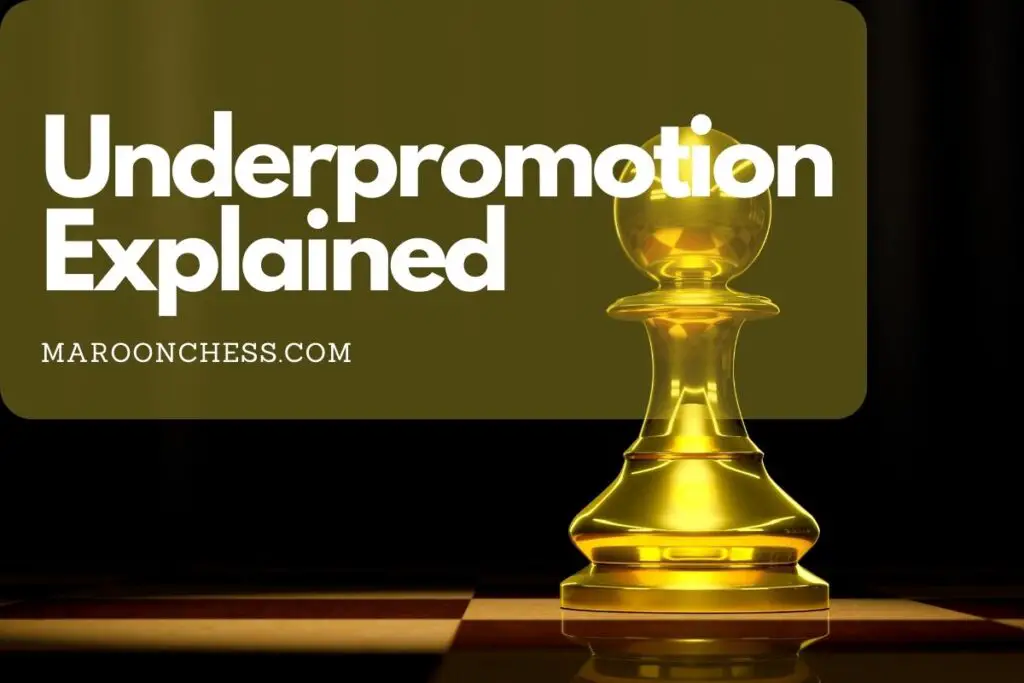One intriguing chess tactic that can catch opponents off guard and lead to unexpected outcomes is underpromotion. While promoting a pawn to a queen is the most common choice, underpromotion involves promoting to a piece other than a queen, such as a knight, bishop, or rook.
This strategic maneuver can be used in various situations to achieve specific goals, from tactical combinations to avoiding stalemate, and is often employed by creative and resourceful players. In this article, we will delve into the concept of underpromotion in chess, exploring its uses, advantages, and when it can be a powerful tool in a player’s arsenal.
What Is Underpromotion In Chess?
Underpromotion in chess refers to the act of promoting a pawn to a piece other than a queen, when the player reaches the eighth rank and has the option to promote their pawn.
Typically, players promote their pawn to a queen, as it is the most powerful piece on the chessboard. However, underpromotion occurs when a player chooses to promote their pawn to a lesser-valued piece, such as a knight, bishop, or rook.
Underpromotion is a strategic and tactical decision that can be used to achieve specific goals in a chess game. For example, underpromoting to a knight can be useful in certain situations where the knight’s unique movement pattern can create threats or fork opponent’s pieces and even deliver checkmate.
In the diagram below, white can capture black’s rook on f8 and underpromote to a knight. This forks the king and the queen, leaving white with a winning position.
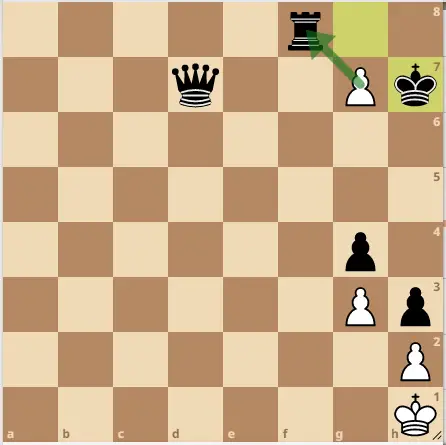
Similarly, underpromoting to a bishop or a rook can be employed in specific scenarios to control key squares, and initiate tactical combinations.
Underpromotion is not a common occurrence in chess, as promoting to a queen is usually the most advantageous choice due to the queen’s high value and versatility. However, underpromotion can be a creative and surprising move that can catch opponents off guard and lead to unexpected outcomes on the chessboard.
Underpromotion To Avoid Stalemate
Underpromotion can be used as a tactic to avoid stalemate in chess. Stalemate is a situation where the player whose turn it is to move has no legal moves but their king is not in check.
It results in a draw, and avoiding stalemate can be important in certain situations where you are aiming for a win or a draw is not desirable.
Underpromotion can be employed to avoid stalemate in cases where promoting to a queen would result in stalemate.
For example, if your opponent’s king is in a corner of the board and your pawn is about to promote to the eighth rank, promoting to a queen might lead to stalemate if the opponent’s king has no legal moves and promoting to a queen would block all the remaining squares.
In such a situation, underpromoting to a lesser piece, such as a knight or a rook, can allow for further moves and avoid the stalemate, keeping the game alive and providing chances for a win.
Example: White should promote to a rook to avoid stalemate

Underpromotion to a knight is particularly useful in stalemate avoidance, as knights have unique movement patterns that can often prevent stalemate.
Knights can jump over other pieces and can often deliver checks or create threats in situations where other pieces might not be able to. Underpromoting to a knight can keep the game dynamic and allow for further maneuvers to try and convert an advantage or avoid a draw by stalemate.
White must underpromote to a knight to keep the game alive.

It’s worth noting that stalemate can also be used as a tactical weapon in certain situations, where a player intentionally aims for a stalemate to force a draw or achieve a favorable outcome.
However, underpromotion can be a useful tool to avoid stalemate and keep the game alive in situations where stalemate would otherwise occur.
Underpromoting to a bishop
In the diagram below, white cannot afford to promote the f7 pawn to a queen as that would result in stalemate. Instead white should promote his pawn to a bishop. After f8=Bishop, white can pick up black’s rook on the next move.
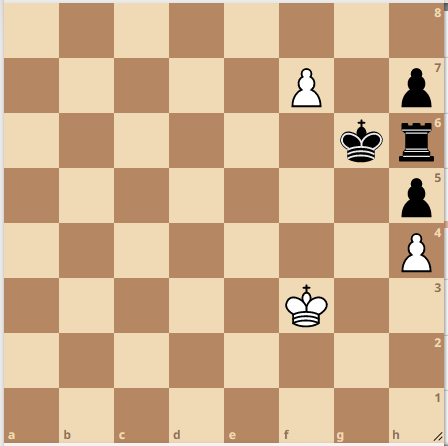
Underpromote To Deliver Checkmate
it is possible to deliver checkmate by underpromoting in chess. Underpromotion can be a creative and effective way to achieve checkmate, particularly in specific tactical or strategic situations. For example, promoting a pawn to a knight or a bishop can create checkmate threats by exploiting the unique movement patterns of these pieces.
Here are a few examples of how underpromotion can lead to checkmate:
Knight Underpromotion
Promoting a pawn to a knight can create checkmate threats, particularly in combination with other pieces. For example, promoting a pawn to a knight on a square that attacks the opponent’s king, while also coordinating with other pieces, such as a rook or a bishop, can lead to checkmate if the opponent’s king has no safe squares to move to.
White underpromotes to knight and delivers checkmate to the black king
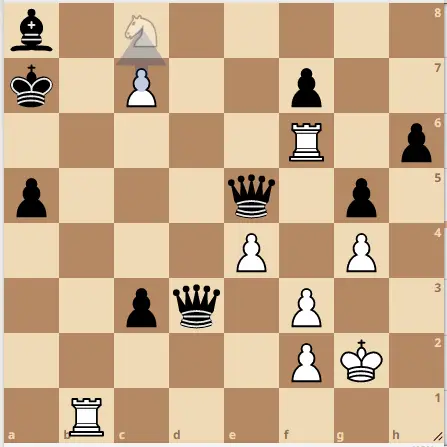
Bishop Underpromotion
Promoting a pawn to a bishop can also lead to checkmate in certain situations. For example, promoting a pawn to a bishop on a diagonal that controls key squares around the opponent’s king, along with other coordinated pieces, can result in checkmate if the opponent’s king is unable to escape the bishop’s diagonal control.
Black underpromotes to a bishop in order to stave off stalemate
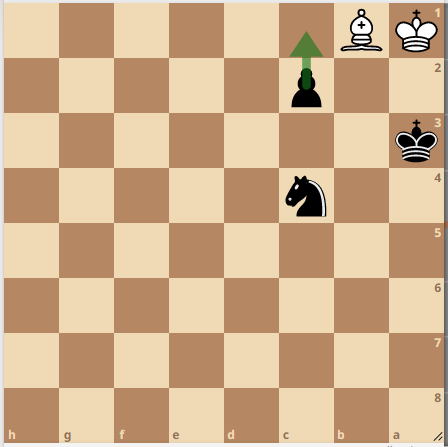
With the help of the knight and king, black uses his underpromoted bishop to deliver checkmate

Rook Underpromotion
Although less common, promoting a pawn to a rook can also potentially lead to checkmate. For example, promoting a pawn to a rook on a file or a rank that directly attacks the opponent’s king, along with other pieces, can create checkmate threats that force the opponent’s king into a corner or restrict its movement, resulting in checkmate.
White should capture the black rook, underpromote to a rook and mate the black king on the next move.

Rook checkmate

Final Thoughts
In conclusion, underpromotion in chess is a strategic and tactical weapon that involves promoting a pawn to a piece of lesser value than a queen.
It can lead to unique opportunities for creative play, surprising the opponent and potentially resulting in checkmate threats.
Underpromotion requires careful coordination with other pieces and strategic calculation to leverage the unique capabilities of the promoted piece. It adds complexity and diversity to chess games, making it an interesting and versatile technique in the game of chess.

